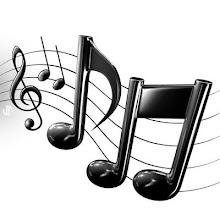Eight weeks ago I reflected on my personal theory of learning based on observations of theorist B.F. Skinner, Howard Garner, brain research, and most of all my personal experiences of teaching and learning. Howard Gardner believes that each and every person possesses a total of nine distinct intelligences and depending on the person, some are more dominant than others (Lever-Duffy & McDonald, 2008). B.F. Skinner believes that students will learn to perform tasks correctly when positive reinforcement is used(Lever-Duffy & McDonald, 2008). Dr. Patricia Wolf in regards to brain research says that learning takes place when meaningful connections are formed within the brain (Laureate Inc, 2009). Personally I believe that all of these theories are correct and when placed together spell out the formula on how learning takes place. After eight weeks of my class, “Bridging Learning Theory, Instruction, and Technology,” at Walden University, I realized that I would not make any modifications to my personal learning theory, because this learning theory is based off of the overall process and differences that exist within the learning process. What I did learn throughout this course was how to effectively use technology and other techniques on how to better implement strategies on how to teach toward this personal learning theory of mine.
We live in the age of Technology and I believe technology should be a huge instructional tool within the 21st century classroom. Dr. Orey talks about an instructional tool vs a learning tool (Laureate, 2009). One change that that I would make is to try to find a way to transfer as many of my instructional tools into learning tools. Students learn better when they can physical touch something and interact, rather than just sitting back and listening to a lecture. One piece of technology that I use all the time is my SMARTboard. When I first started using the SMARTboard six years ago, I used it primary as an instructional tool, because I thought it would take to much time out of the class to teach the students how to manipulate it and I did not want it to get broken. Over the years, I realized that the purpose of having technology in the class is so the students can use it and they should be able to interact and experience it. One of my long range goals is to take all of my SMARTboard files and adapt them into student centered learning tools.
Another long term goal that I have in regards to technology in my classroom, is to take more advantage of the resources I have available to me. In my utopian classroom, every child would have a macbook pro equipped with, “Music Maestro,” “finale,” “garage band,” and other various music software. Now I could complain about how I do not have the necessary resources, or I can take advantage of what I do have. I have a SMARTboard, two extra PCs, and I’m getting 2 iPads next year. There are lots that can be accompmlished with this technology. I’ll keep asking my administration for more, but I will work with what I have. The key to implementing this strategy is to take baby steps along the way. A teacher is not only a teacher, but is also a learner, and I believe there is a lot to be learned with and from my students.
Resources:
Laureate Education, Inc. (Executive Producer). (2009). Brain research and learning: Bridging learning theory, instruction, and technology. Baltimore: Author.
Laureate Education, Inc. (Executive Producer). (2009). Technology: Instructional Tool vs. Learning Tool: Bridging learning theory, instruction, and technology. Baltimore: Author.
Laureate Education, Inc. (Executive Producer). (2009). Understanding the brain: Bridging learning theory, instruction, and technology. Baltimore: Author.
Lever-Duffy, J. & McDonald, J. (2008). Theoretical Foundations (Laureate Education, Inc., custom ed.). Boston, MA: Pearson Education, Inc.
Subscribe to:
Post Comments (Atom)

No comments:
Post a Comment